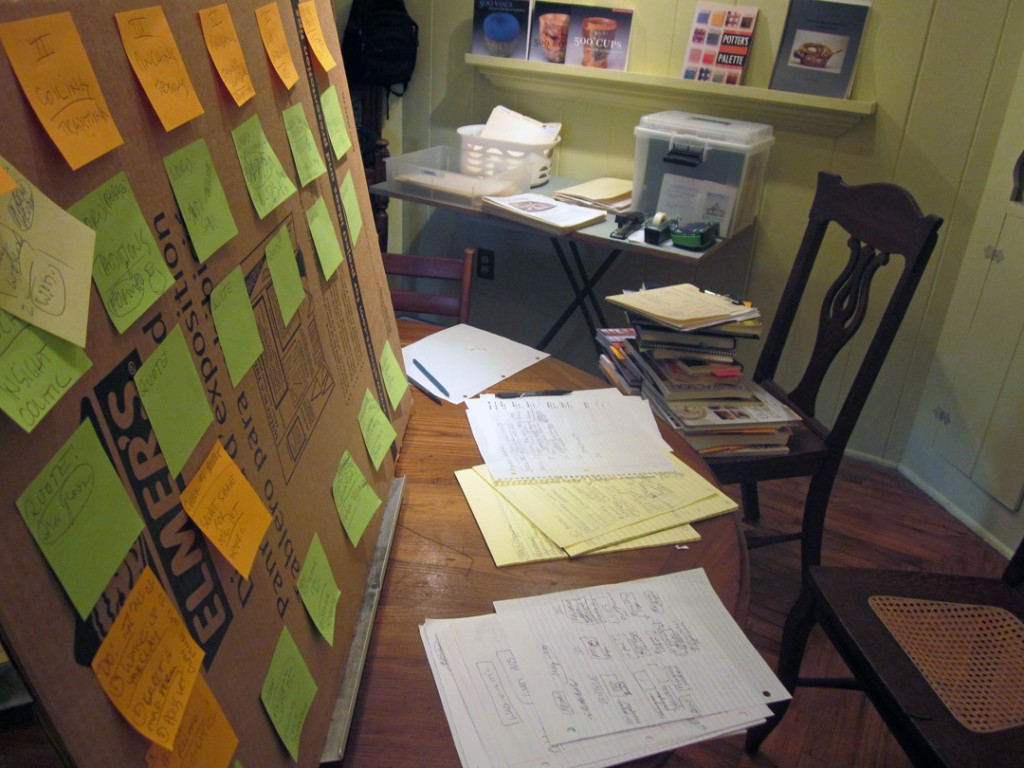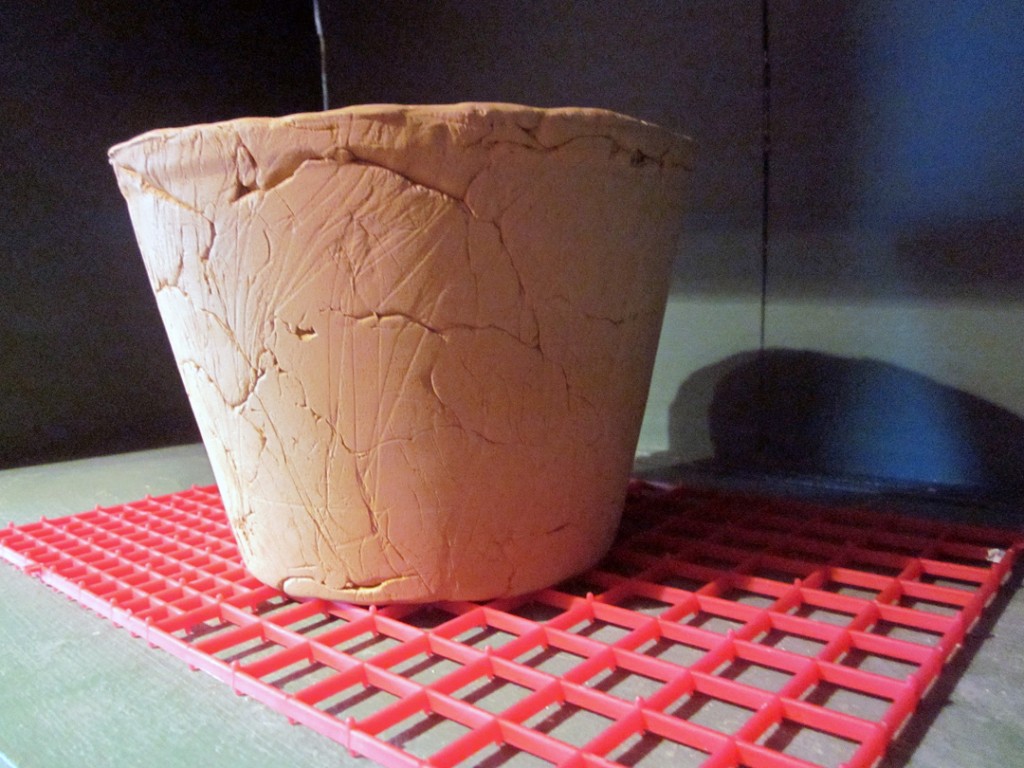
OK yes, that title is a tad dramatic. But it’s not a needy and exaggerated untruth: I’m actively sorting and defining what I know and enjoy about the entirety of ceramic arts in order to hone in on the heart and soul of this Beginning Handbuilding class, taught by me, starting at the end of this month.
And this week that honing process hit critical mass. It felt a little like peeking into a ramping raku kiln and watching for the powdery glaze on the pieces to liquify, come to a bubbling boil and then to smooth out again as both it and the ware it is coating becomes blastingly red-hot. And THEN comes the moment to shut off the gas and pull the pieces with tongs into their garbage can reduction chambers. Most of you ceramicists out there will understand this reference, but if you need a visual, here’s a good one.
All this week I gathered and listed and piled and flagged. I re-piled and sorted and started a board of sticky notes detailing each project’s intended trajectory through the weeks. I assembled the needed demos, quotes, glossary, Important Things to Know and on and on. I culled (which was clearer and easier now) and kept the best. A Beautiful Mind got nuthin’ on me!
Last post I talked about how this class-formulating process amasses information. I think I mentioned something about comparing the ceramic teaching process to cooking show demos, but I’m reporting in tonight that I’m not quite ready for that one. Maybe next week. I HAVE made one sample of a Press Mold Wad Pot, which you can see below, but now I realize it’s the first of several needed to provide tangible illustrations of the important stages of just one of three comprehensive methods and techniques I will be teaching.

And that serves my personal understanding of Full-Service Ceramics. Sometimes students can connect the dots, but I find in ceramics it’s not all that easy. The whole process is un-obvious, far-ranging, deceptively sidetracking and negotiable.
But that’s also the most important clue for me as as Interpreter and Guide: first and foremost, I need to have a profound and undistracted personal sense whereof I speak. If I gloss over, give the short shrift, make assumptions, it does not do the job in that satisfying way. I think I am connecting my own dots, retrospectively. As a matter of fact, I could re-title this post Things I Wish Someone Told Me Right Away.
And even then, the only way out is by doing it. So while I prepare and attempt to perfect my offerings for my new class and students, ceramics has also taught me to be more comfortable with imperfect and unexpected outcomes. With learners of all ages, that’s nearly a given. Years of helping clay handbuilding students has told me this amount of preparation is no less than the right amount, as cloggy and complicated as it can be. I’m glad it’s ONLY 30,000 years I need to review and condense and, like I said, I’m enriched and privileged to do it.
Class Nuts and Bolts: 6 Thursdays, 2-5pm, Session I: Feb 23 to March 29, Session II(with different techniques, projects and subject matter I still have to formulate): April 12 – May 17 held at the Santa Cruz Mountains Art Center, 9341 Mill Street, Ben Lomond, CA, 831-3364ART.
If you’re so inclined, you can call or register online at www.MountainArtCenter.org. Class is $180 for Members/$200 Non-Members.
Next time: Those visual aids!
